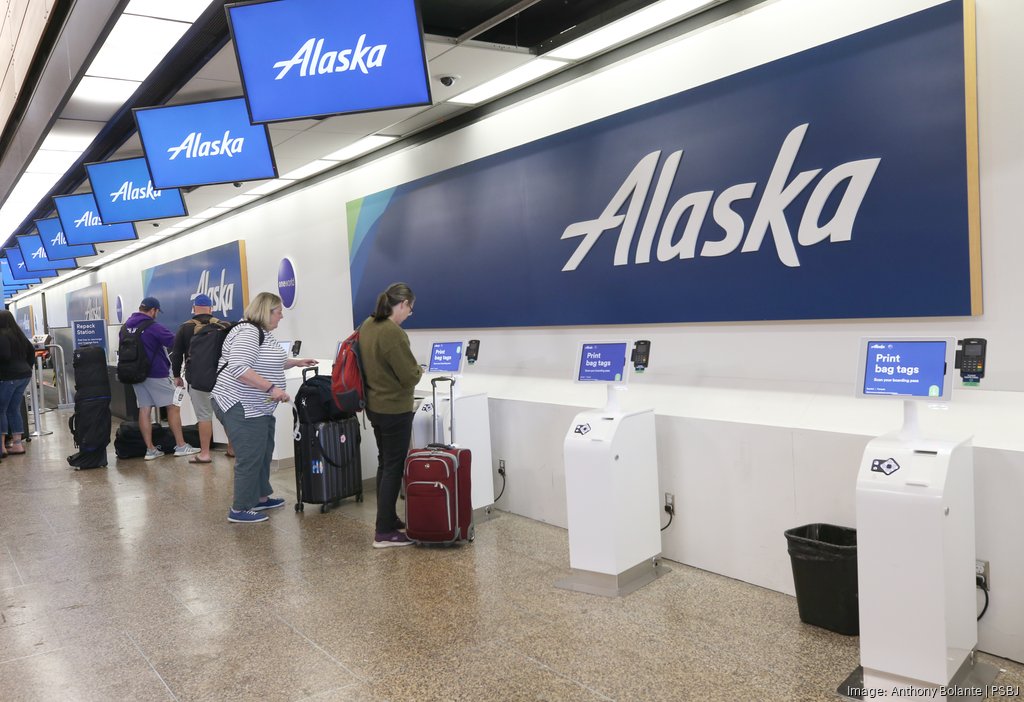Marissa Nall
By Marissa Nall – Reporter, Puget Sound Business Journal
Jul 25, 2023
Alaska Airlines (NYSE: ALK) reported a jump in revenue and net income during the second quarter, but its shares fell 10% by midday Tuesday over higher costs expected to affect its performance over the latter half of the year.
The SeaTac-based airline said it set a new record for passengers flown during a single day and came close to its highest daily revenue. Revenue continued to climb in the second quarter to $2.8 billion, a 7% increase from the same period last year. Net income also rose to $240 million, or $1.88 per share, falling short of analyst estimates.
That’s as costs for things like maintenance and airport landing fees have been on an upswing. The company also spent around $186 million on its fleet overhaul during the quarter as it replaces aging Airbus planes with larger new Boeing jets.
That “upgauge” effort has helped Alaska fly more people even as departures have declined 1.3%, but it’s also added new training costs for pilots and crews. Those costs are expected to continue until the end of the year before clearing up in 2024, the company said.
Capacity is expected to rise 10% to 13% from last year in the coming quarter, with revenue rising more slowly as peak domestic demand cools, CEO Ben Minicucci said on an earnings call Tuesday. International demand is expected to take its place, with a surge as “a larger pool from would-be domestic travelers than has historically been the case” take to the skies.
But the West Coast, where the company’s network is most heavily concentrated, is “the least recovered region in the U.S.,” said Chief Financial Officer Shane Tackett.
The company expects that to improve, including the business travel market, which may finally surpass 75% of pre-pandemic demand.
“We believe that once pent-up international demand is run through, there will be a normalization in the international versus domestic demand makes further providing pricing support and our network,” Tackett said.
The company has been focused on getting as much out of its network as possible, but as demand trends shift, it is keeping an eye out for areas to be more strategic, Minicucci added.
“In a period of historically high demand and yields, the right economic decision has been to fly and maximize (available seat miles) within our fleet and crew capabilities,” he said. “That said, if we identify pockets of relative softening, we will adjust as needed to deploy our capacity thoughtfully.”
